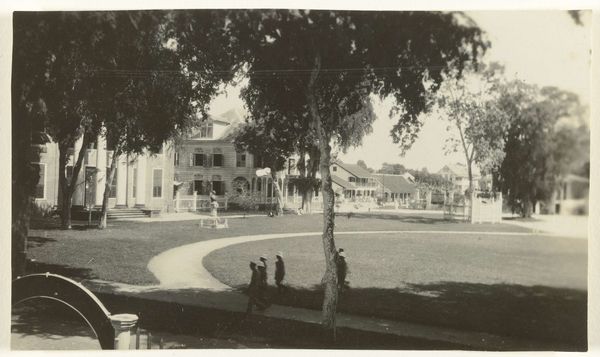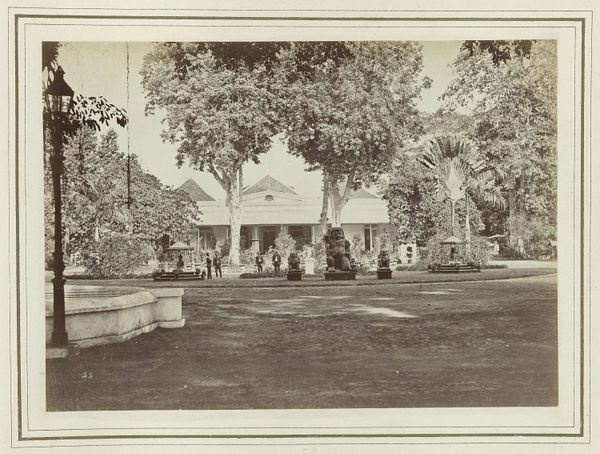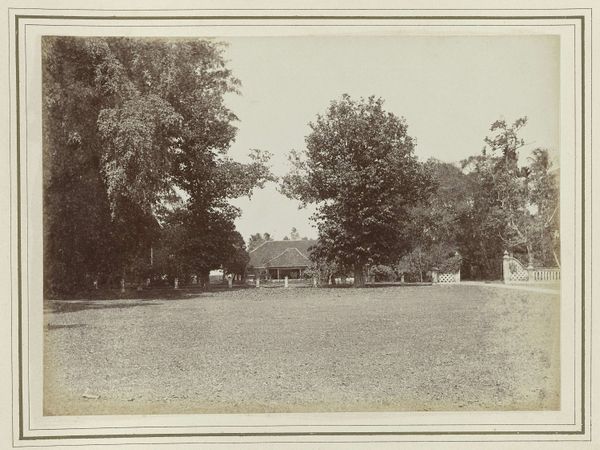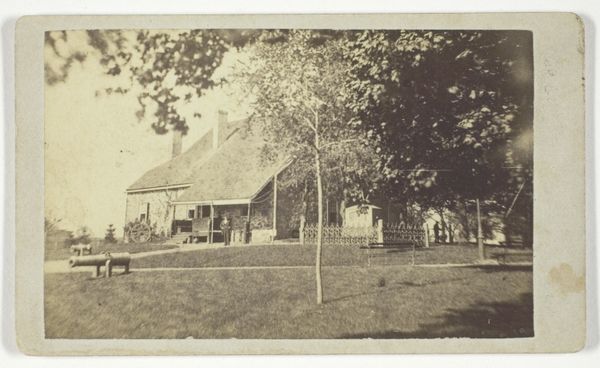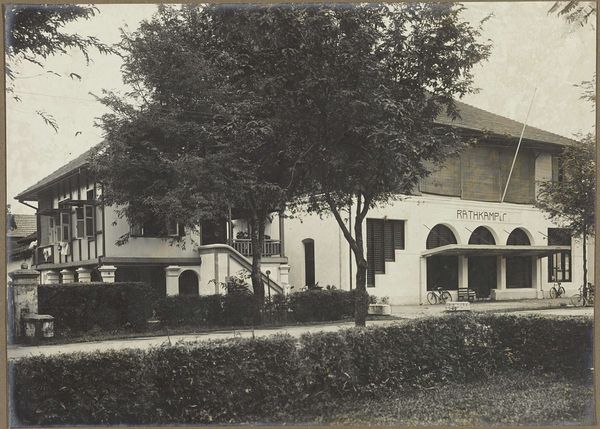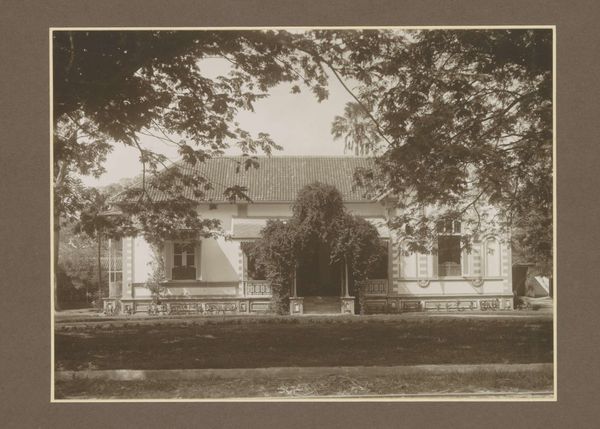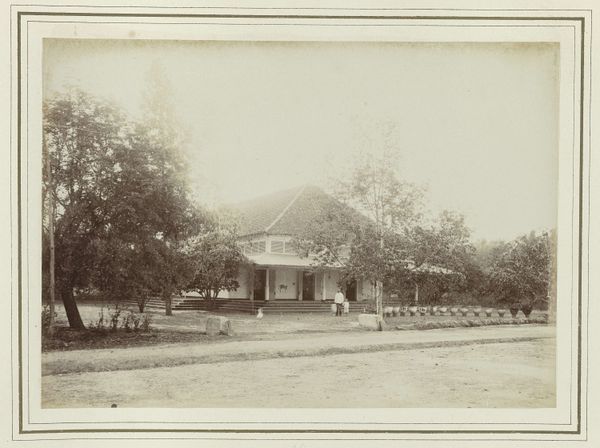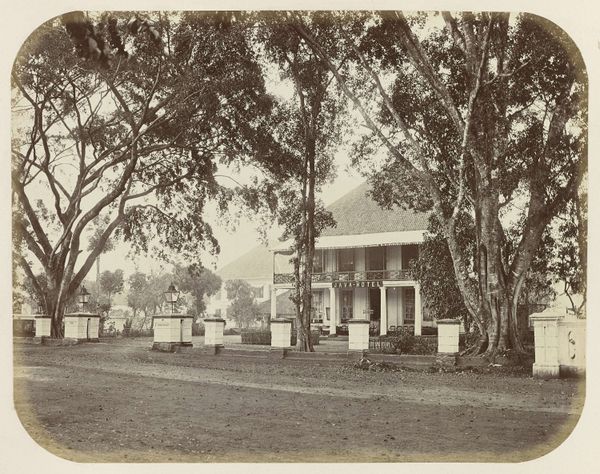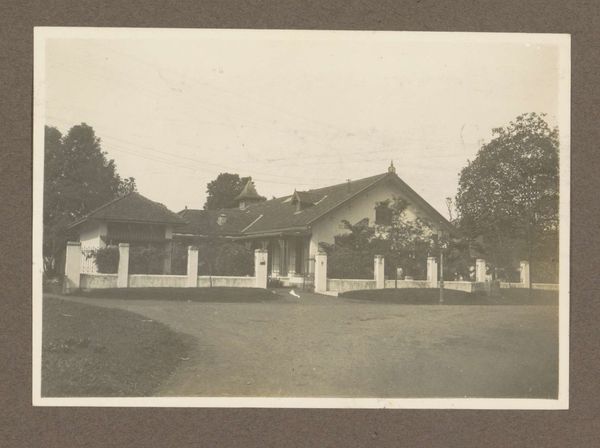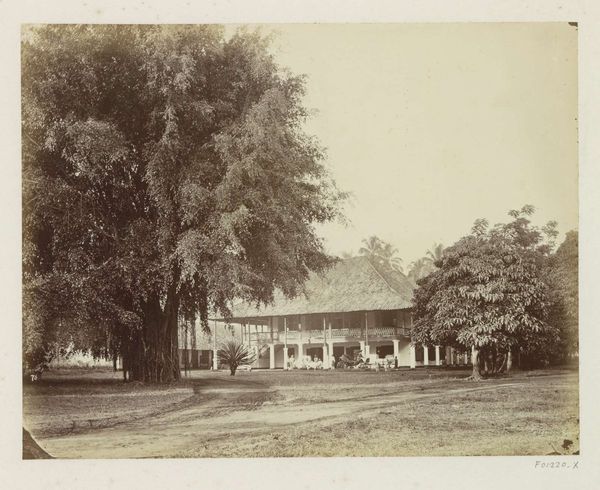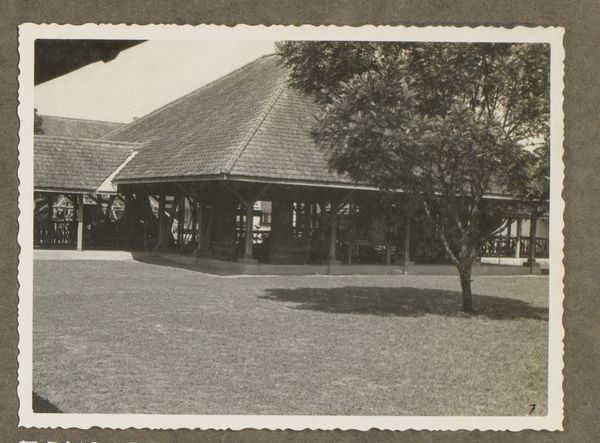
Woningen met tennisbaan voor werknemers van suikerfabriek Goedo te Djombang op Java c. 1925 - 1930
0:00
0:00
photography, gelatin-silver-print
#
landscape
#
archive photography
#
photography
#
historical photography
#
gelatin-silver-print
#
cityscape
Dimensions: height 297 mm, width 450 mm
Copyright: Rijks Museum: Open Domain
Curator: Here we have an intriguing gelatin-silver print, dating from around 1925 to 1930. It's titled "Woningen met tennisbaan voor werknemers van suikerfabriek Goedo te Djombang op Java" which translates to "Houses with tennis court for employees of the Goedo sugar factory in Djombang, Java." It was captured by the photographer Isken. Editor: There’s something quite unsettling about the image. Despite the seeming tranquility of the scene – the orderly houses, the promise of leisure in the tennis court, the lush vegetation – there’s an underlying feeling of...unease. The high contrast and the almost clinical composition contribute to this. Curator: Well, that sense of unease is precisely what I find so compelling. This image isn't just a benign landscape; it's a snapshot of colonial social engineering. The Goedo sugar factory would have been a significant economic engine at the time, and these houses and the tennis court weren't just amenities; they were tools used to cultivate a specific type of workforce. Editor: Exactly! This photo naturalizes a racialized hierarchy. The workers’ housing and tennis court point to the tangible rewards doled out by a paternalistic colonial power – rewards always contingent on compliant labor. The wave-shaped dividing walls that protect this idyllic scene appear symbolic. Who and what is being kept inside and outside these barriers? Curator: The very architecture reinforces the colonial structure. The housing, likely reserved for European employees, clearly differentiates them from the local Javanese population who labored in the fields. We must remember, these factories exploited the land and the indigenous people to profit. Editor: Absolutely. Consider the framing too. The way the dense foliage presses in on the edges feels symbolic of the natural environment being encroached upon. And the perfectly manicured lawn only underscores the power dynamic: labor converted into leisure for a select few, carved from the landscape under exploitative labor conditions. Curator: This photograph serves as a poignant reminder that even seemingly idyllic scenes can mask profound inequalities and exploitative power structures. It’s a potent illustration of the everyday realities of colonialism and its impact on social spaces. Editor: And it challenges us to critically examine similar landscapes today. What systems of power are hiding in plain sight within our own built environments?
Comments
No comments
Be the first to comment and join the conversation on the ultimate creative platform.
